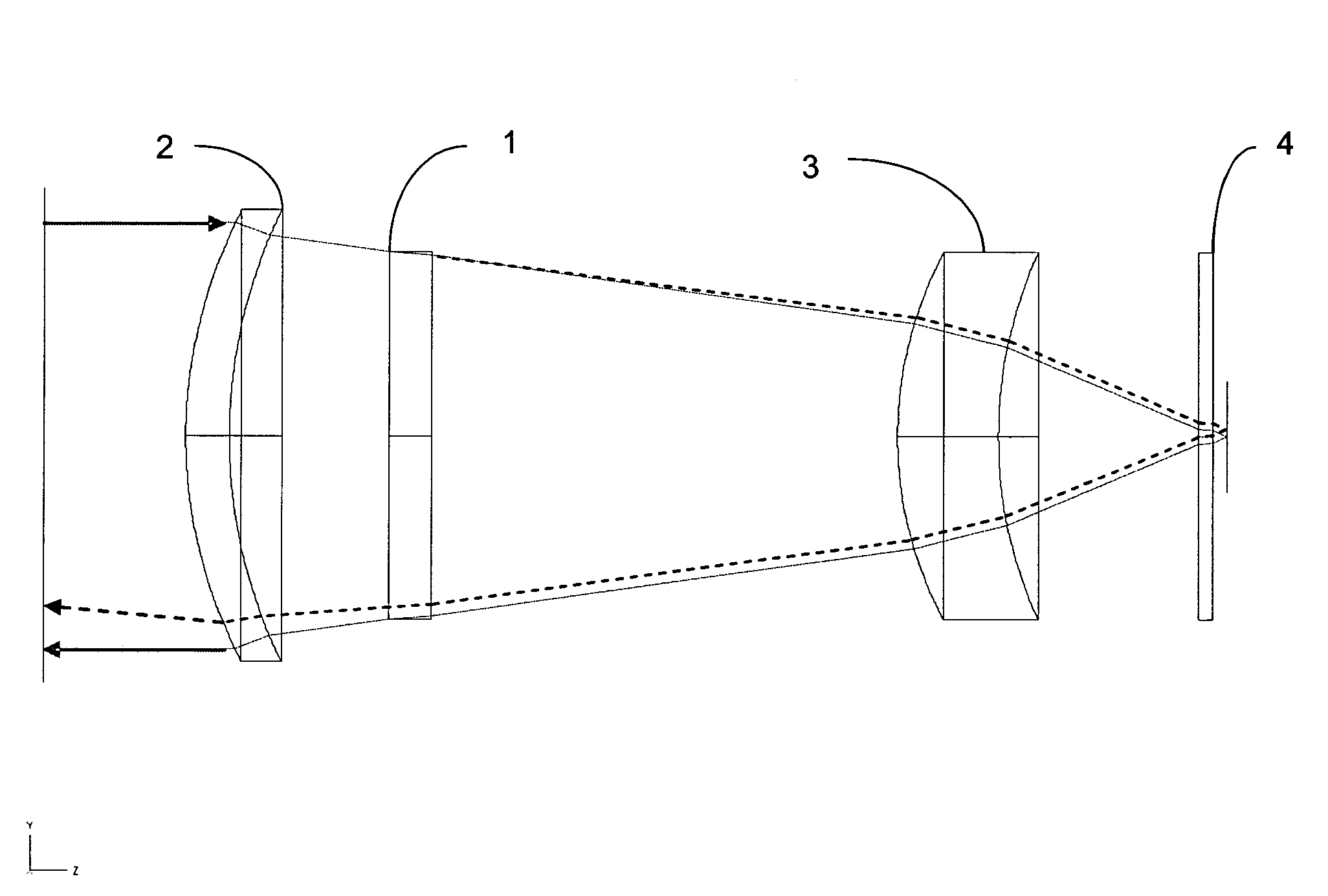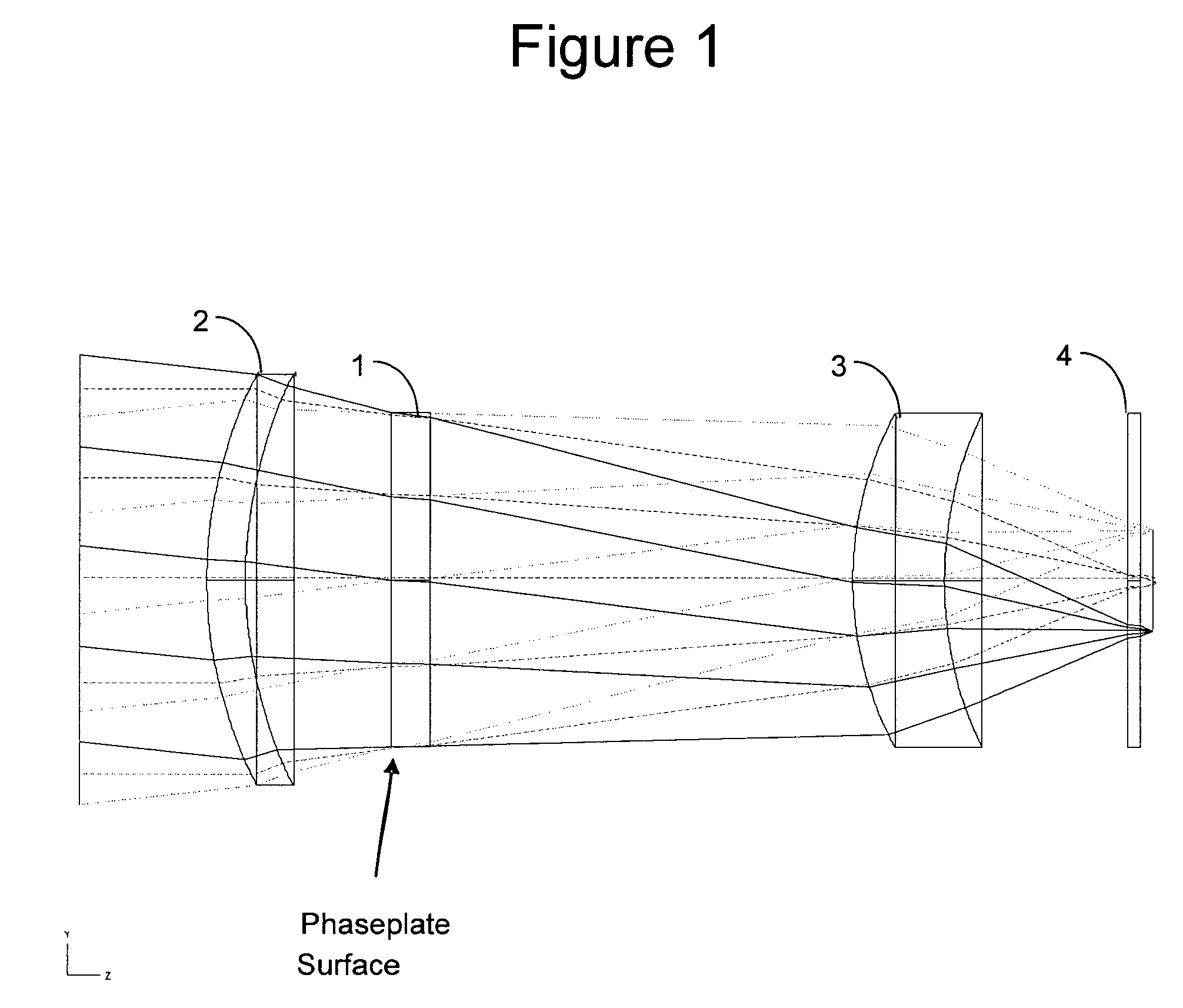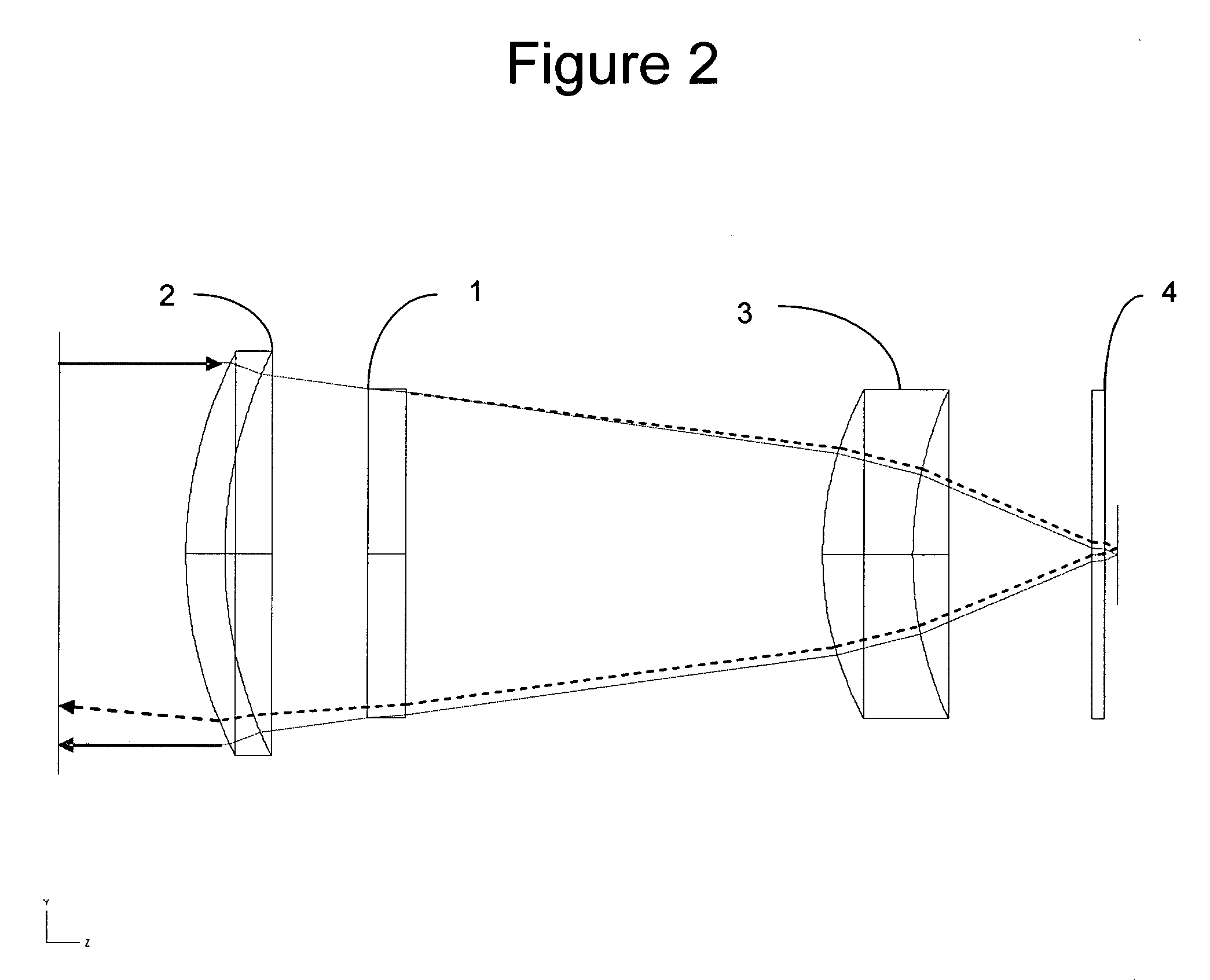Method and apparatus for signature reduction using wavefront coding
a wavefront coding and wavefront technology, applied in the field of electronic and infrared devices, can solve the problem of typically remaining retro-reflection signals, and achieve the effect of reducing the amount of light and reducing the retro-reflection
- Summary
- Abstract
- Description
- Claims
- Application Information
AI Technical Summary
Benefits of technology
Problems solved by technology
Method used
Image
Examples
Embodiment Construction
[0013]The invention applies wavefront coding to an Electro-Optic / Infrared (EO / IR) device (for example, an infrared staring sensor) such that the retroreflected wavefront can be modified to reduce the signature of the device. Implicit in the wavefront coding technique is the ability to code the wavefront to a specific advantage and then decode it through signal processing. In this case, the advantage is to minimize the amount of light that is retroreflected by a sensor back to its source.
[0014]FIGS. 1 and 2 show a preferred embodiment of the invention. FIG. 1 shows an optical train with an optical phase plate at the pupil. Several fields are shown passing through the system and on to the FPA. FIG. 1 illustrates the position of the phase plate but not its effects on the transmitted rays. FIG. 2 illustrates the operation of the optical system on-axis both with and without the effects of the phase plate for retroreflection reduction. During normal operation of the optical system, a ray ...
PUM
 Login to View More
Login to View More Abstract
Description
Claims
Application Information
 Login to View More
Login to View More - R&D
- Intellectual Property
- Life Sciences
- Materials
- Tech Scout
- Unparalleled Data Quality
- Higher Quality Content
- 60% Fewer Hallucinations
Browse by: Latest US Patents, China's latest patents, Technical Efficacy Thesaurus, Application Domain, Technology Topic, Popular Technical Reports.
© 2025 PatSnap. All rights reserved.Legal|Privacy policy|Modern Slavery Act Transparency Statement|Sitemap|About US| Contact US: help@patsnap.com



